The seven Freshwater Management Units (FMU) that make up the Horizons Region are home to many rivers, including four of the North Island's longest: Whanganui (290km), Rangitīkei (241km), Manawatū (182km), and Whangaehu (161km). Check out the Oranga Wai | Our Freshwater Future website to learn more about the Region’s FMUs.
You will find adventure-seekers kayaking, canoeing or white-water rafting along the rivers, and families with their dogs making a splash at their local swimming holes. Native freshwater fish also love spending time in the Region, with 19 species, some rare and threatened, calling these waters home.
Overall, water quality in the headwaters of most rivers and streams is good. However, a range of natural and man-made factors causes the quality to decline as it journeys towards the coast.
The main issues for the water quality of our rivers and streams are high levels of the nutrients nitrogen and phosphorus, poor visual clarity, high sediment yields, and high bacteria counts.
Whilst naturally occurring, nutrients in our rivers are elevated due to piped discharges to water and how we use land. These elevated levels feed weeds in our waterways and lead to an overgrowth of periphyton. While periphyton provides food for invertebrates at low levels, it can harm aquatic communities when it becomes excessive. Over the last ten years, we have seen increased phosphorous and algal growth levels in the Region's rivers and streams. Throughout the same period, however, less nitrogen has been recorded at half of the sites we monitor.
Faecal indicator bacteria (E. coli) primarily enter our waterways via the excess water that runs off the land after it rains. Direct discharges to water and stock wandering into streams and rivers are also issues in some places. Over the past ten years, E. coli levels are generally getting worse. However, sites with over 20 years of data show that E. coli is improving at more locations.
Our Monitoring Programmes
Horizons has one of the most extensive river monitoring networks in the country. To assess the health of our Region's rivers, we monitor up to 16 different indicators of water quality and ecosystem health at 174 sites every month. This network comprises over a hundred State of the Environment (SoE) water quality monitoring sites. These include 29 effluent locations, areas upstream of direct discharges to water and 29 sites that measure the impact of discharging treated urban or industrial wastewater into rivers and streams.
Our swim spot monitoring programme covers over 80 sites across the rohe, including 66 rivers and estuaries. Every swimming season, from November to April, our staff check these popular locations weekly to ensure they are suitable for swimming.
We also collect river flow data from 65 sites across the Region. This includes Manawatū at Teachers' College, which has been running since 1923 - the longest continuous record of river flow in New Zealand. This data is used for various reasons, including informing water abstractors about water restrictions.
Regional Plans and Restoration Activities
- Horizons' One Plan (our Regional Plan) defines how the Regional Council, in partnership with Territorial Authorities and communities, will manage and care for the natural and physical resources of the Region.
- The Sustainable Land Use Initiative (SLUI) implements Whole Farm Plans to manage highly erodible land. It uses various tools to keep soils on the hills, which prevents sediment and nutrients from entering our rivers.
- Horizons' Freshwater Programme supports local communities and landowners to manage and restore riparian zones (environments alongside the river). The banks of rivers and streams are planted with vegetation that filters nutrients from the water. Fences are erected to keep stock on their pasture.
- Our three Freshwater Improvement Fund projects in the Manawatū, Lake Waipu and Whangaehu support community projects, the development of iwi management plans, upgrades of wastewater treatment plants for land discharge, and fences and plants along streams and reduces barriers to migratory fish passage, such as culverts.


















